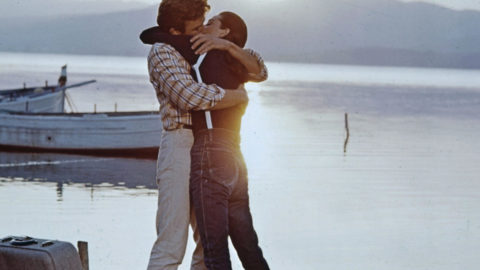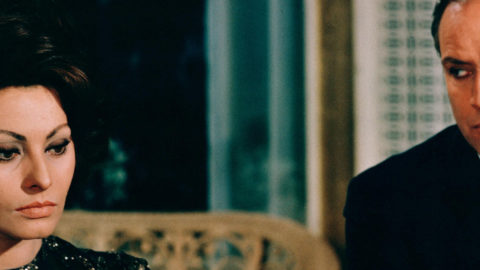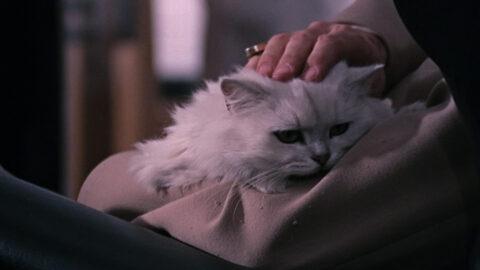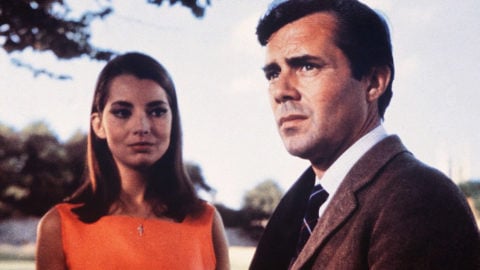Cinema ’67 Revisited: Wait Until Dark
In my 2008 book Pictures at a Revolution, I approached the dramatic changes in movie culture in the 1960s through the development, production, and reception of each of the five nominees for 1967’s Best Picture Academy Award: Bonnie and Clyde, The Graduate, In the Heat of the Night, Guess Who’s Coming to Dinner, and Doctor Dolittle. In this biweekly column, I’m revisiting 1967 from a different angle. As the masterpieces, pathbreakers, and oddities of that landmark year reach their golden anniversaries, I’ll try to offer a sense of what it might have felt like to be an avid moviegoer 50 years ago, discovering these films as they opened.
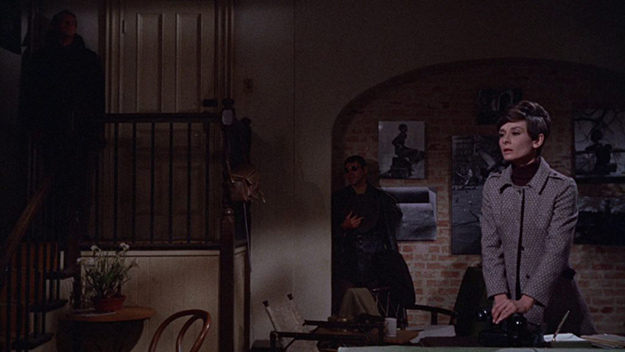
In the mid-1960s, horror on American screens mostly meant one of two things: Vincent Price in a Roger Corman movie or Grand Guignol starring one of the many middle-aged actresses seeking employment and being offered little more than increasingly degraded rip-offs of Whatever Happened to Baby Jane?. It was a genre most studios and directors preferred to avoid—something that would change precipitously in 1968 with Roman Polanski’s Rosemary’s Baby. But in 1967, Warner Bros. took a decorous step into the business of making audiences scream with Wait Until Dark, which put Audrey Hepburn in peril and is, today, most notable for being a bridge between well-mannered lady-in-danger movies and the more gut-level horror soon to come.
To be clear, there’s nothing supernatural about the story of a young woman, recently blinded, who is terrorized in her own apartment by a sadistic criminal. But Warner sold the movie as all-out horror, announcing in a preposterous but extremely effective advertising campaign that “during the last eight minutes of this picture the theatre will be darkened to the legal limit to heighten the terror of the breathtaking climax . . . If there are sections where smoking is permitted those patrons are respectfully requested not to jar the effect by lighting up during this sequence.” It was a successful stakes-heightening for a story that that had already grabbed play-going audiences when it ran on Broadway for 11 months in 1965. It’s no stretch to imagine that the studio could have had a remarkably successful film had it simply hired the two stars of the stage version—Lee Remick (a Tony nominee for the role) and Robert Duvall, still a few years away from being a name moviegoers would recognize. Instead, Warner went with an established A-list movie star (Hepburn) and Alan Arkin, a New York stage actor who had just had a Hollywood breakthrough with his performance in Norman Jewison’s The Russians Are Coming! The Russians Are Coming!.

In the hands of director Terence Young (best known for making three of the first four James Bond movies) and cinematographer Charles Lang, whose career had begun in the silent era, Wait Until Dark offers little of particular visual distinction; though shot on location in New York, it has the flatly lit backlot look of pictures from a decade earlier and no real sense of urban atmosphere or texture. Nor does the script help matters: the action, confined mostly to Hepburn’s apartment, betrays its origins as a play at every turn, from the awkwardly handled exterior scenes meant to “open it up” to the 22-minute wait for the leading lady to make her entrance. The story—Arkin is a vicious drug dealer trying to retrieve a shipment of heroin hidden in a doll that is in Hepburn’s possession, through no fault of her own—is, as Time magazine noted, “as full of holes as a kitchen colander.” In fact, most of the first three-quarters of Wait Until Dark is stalling and distraction, an excuse to belittle Hepburn (both her boyfriend and the creepy girl next door try to train her blind character like a dog) until we get to the sequence that sells it and that made it a substantial hit—a climactic 20-minute cat-and-mouse face-off with Arkin pursuing Hepburn in her apartment, the twist being that if she can keep all the lights out, she can level the playing field. Both actors play it for what it’s worth (with valuable assistance from a refrigerator that is practically a third character), and the film’s money shot—Arkin leaping out of the dark at Hepburn—was one of the first great nope-he’s-not-dead-after-all surprises in movies, and still works. (No less an expert than Stephen King called it one of the scariest showdowns in any film.)
The rest of Wait Until Dark is dated, sometimes painfully so. Hepburn described herself as “completely miserable while making [the movie] because I had been separated from my son for the first time.” Also, her marriage (to the film’s producer, Mel Ferrer) was falling apart during production; their plans to divorce were announced a month before the picture opened at Radio City Music Hall. And she knew the role held few challenges for her. Earlier in the year, she had gotten to play an adult woman at four different stages in her life in Stanley Donen’s Two for the Road, probably her greatest role. In Wait Until Dark, the 38-year-old actress was stuck trying to make something out of a woman who was infantilized and condescended to by everyone around her, a plucky but largely helpless girl who has to say lines like, “I wish I could do things—you know, important things, like cook a soufflé or pick a necktie or choose the wallpaper for the bedroom.” Audiences loved her in the movie, as did the Academy; Hepburn professed bewilderment. “I was nominated for Wait Until Dark when I liked myself better in Two for the Road,” she said. She didn’t make another picture for nine years. As for Arkin, despite a showy part that allowed him to wear two different disguises and try a variety of accents, the Academy ignored his work, and he later said he learned a useful lesson: “You don’t get nominated for being mean to Audrey Hepburn.”
How to see it: Wait Until Dark is available on DVD and Blu-ray and streams on Amazon, YouTube, iTunes, and other major services.
Mark Harris is the author of Pictures at a Revolution: Five Movies and the Birth of the New Hollywood (2008) and Five Came Back (2014).



